International Judaica Artist: "I Never Thought I Would Work in This Field"
Shuli Razon is a Judaica artist whose works are exhibited in exhibitions in Israel and around the world. While she spends years working on some pieces, her primary inspiration comes from her inner world, home, and children. An interview with a breathtaking gallery.
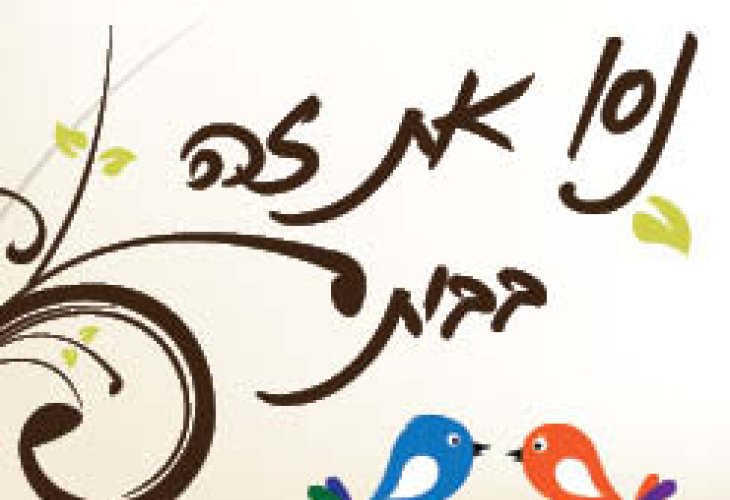
Shuli Razon never thought she would become a Judaica artist. Although, as she testifies, since she was a child, art has been a form of oxygen for her, "truly an obsession," she notes. "The truth is, ever since I reached the age where I can 'think', I've known I would be a painter. The only question was - when?"
Nonetheless, for years she did not engage in Judaica works, and if you had told her there would come a day when her creations would be displayed in exhibitions in the U.S., she would have looked at you in disbelief. This was the last field she thought of joining.
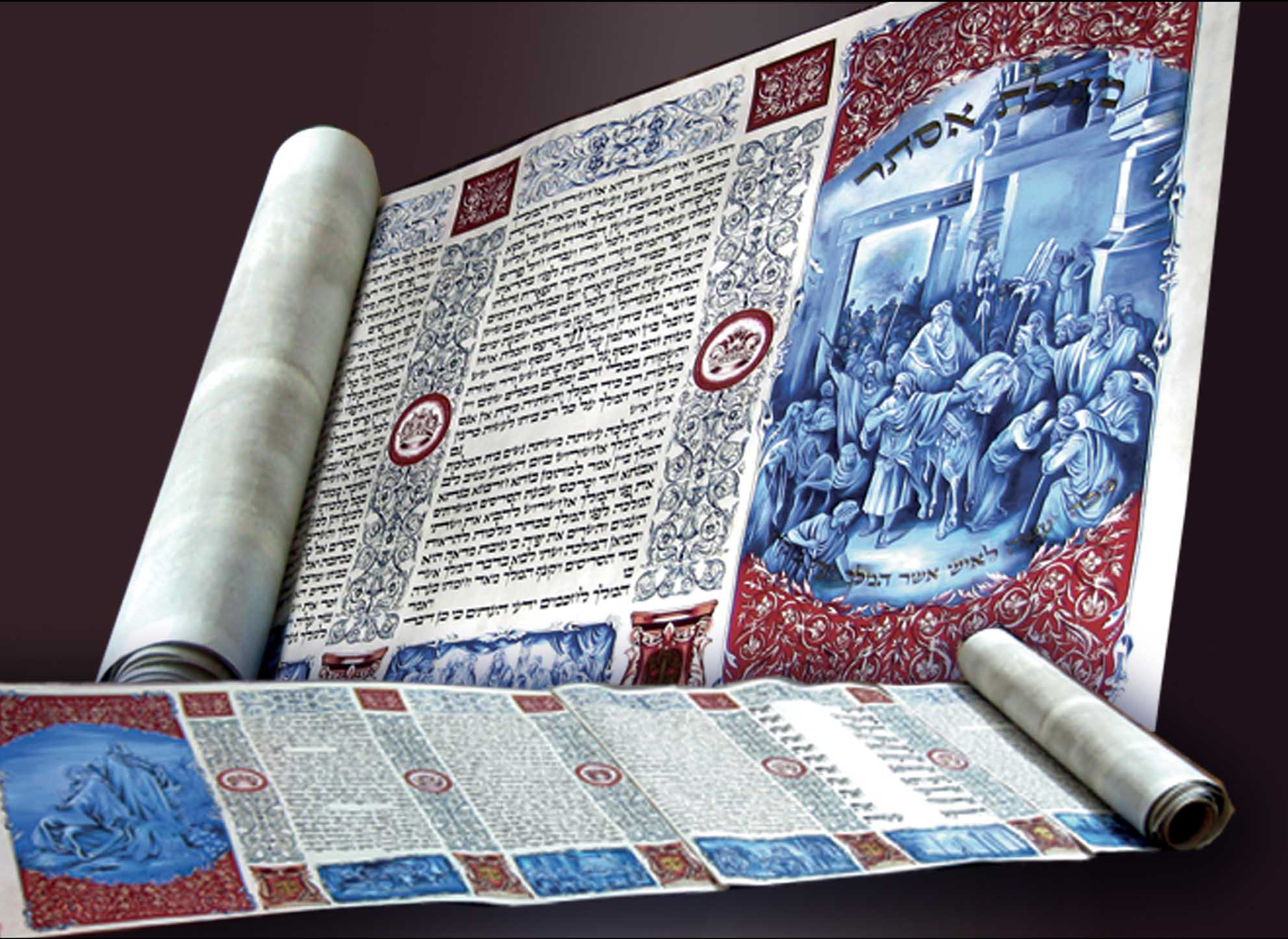 The First Scroll
The First ScrollOne of the main fields she engaged in during the first years of turning art into a profession was portrait illustration. "I would receive photos from people and be asked to transfer them accurately to paper through illustration. I recall two particularly emotional orders - one of a soldier who fell in Lebanon and another of a person killed in an attack. The challenge of conveying the identity and personal expression of the person was very demanding, and the moment of handing over the piece to the family members was both touching and sad."
Shuli adds that over the years, she engaged in almost every possible art field, and over time, she studied with expert teachers in graphic design, academic drawing, painting, ornamentation, gilding, and many other areas without number. "Each one enriched me from its perspective, but I still didn't know exactly what I wanted to specialize in. For years I also worked as a graphic artist, but I constantly felt that the field did not fulfill the creativity I wanted to express," she explains. "I was searching for something else and didn't know what."
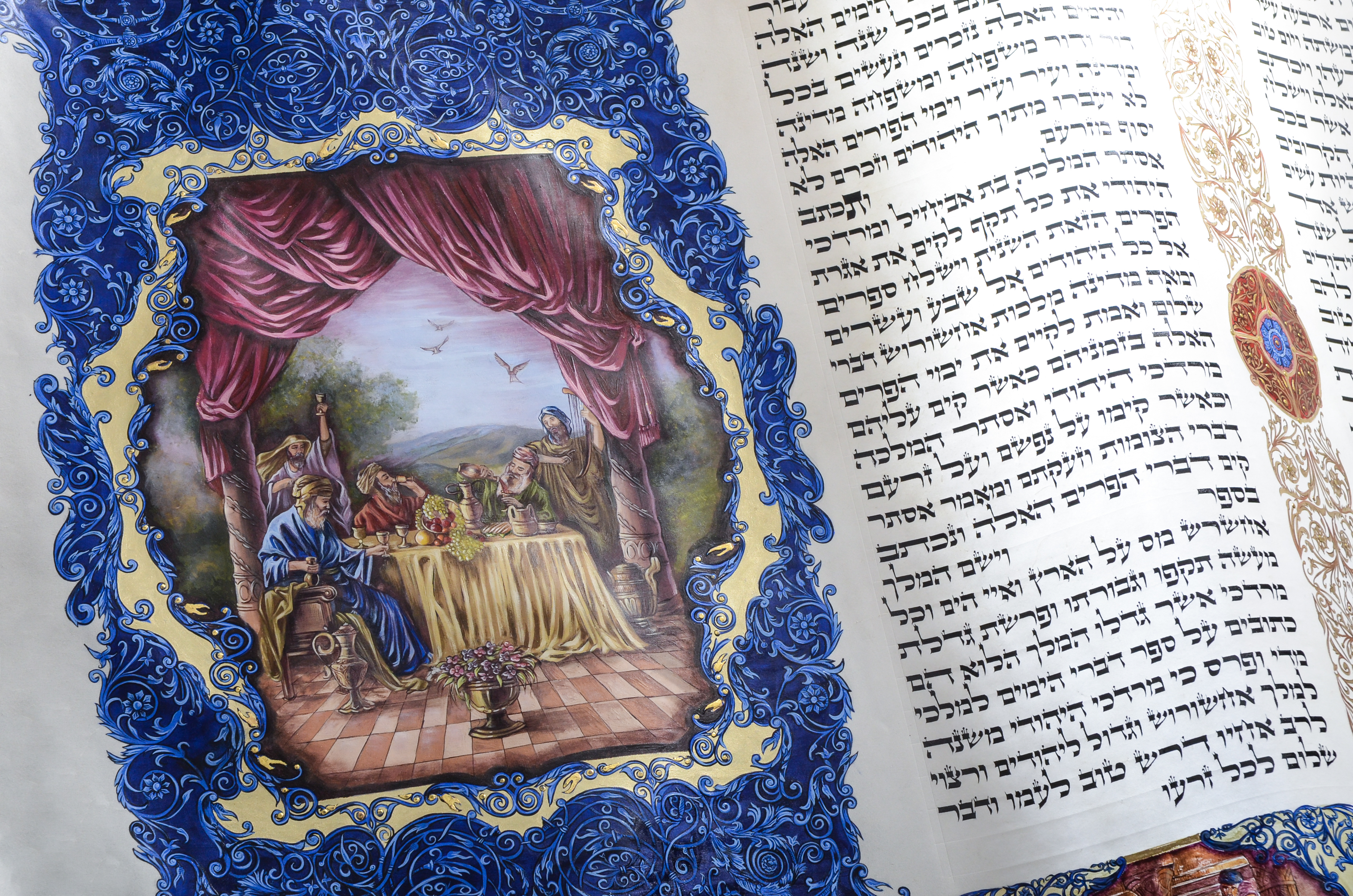
The World of Judaica Opens
One day, Shuli decided she wanted to try her hand at Judaica and even started to take an interest in the field. Her first creation was a wedding ketubah.
She recalls what preceded the creation: "I honestly didn’t understand the field at all then, so I went to a random store in Mea She'arim and bought a parchment that turned out to be of very poor quality. On that parchment, I created my first Judaica work - a ketubah I thought was the most beautiful thing I had done so far. I printed 600 copies and prepared to distribute them in galleries. I was very excited because I felt I had found my place in the field of creation. This led me to even leave my graphic design job, with a clear plan to start working in Judaica independently."
Plans changed slightly when about a week later, a friend called her and mentioned she heard that the 'World of Judaica' studio in Beitar was looking for women to join the field. "I arrived there with anticipation, presented the aforementioned ketubah, but then I saw their creations and suddenly realized the level possible in the field of Judaica in terms of the work's richness and complexity. Since I am also a perfectionist in my work, I shelved all the printed copies of the ketubah that very day and handed them over to my children as drawing paper..."
In the meantime, Shuli began working regularly at the studio, being exposed to substantial and magnificent creations on an international scale. "I worked there for eight hours a day, significantly improving my technical drawing skills and prompting me to set higher renewed standards for myself. I must note, and this is the place to give thanks, that the patient guidance, encouragement, and positive atmosphere I received there were a significant part of what led to my success with Hashem's help. In general, I feel such a great privilege to work in Judaica, in things with value that express the world of Judaism. There are creations with value and those without. I feel I am working in a meaningful job."
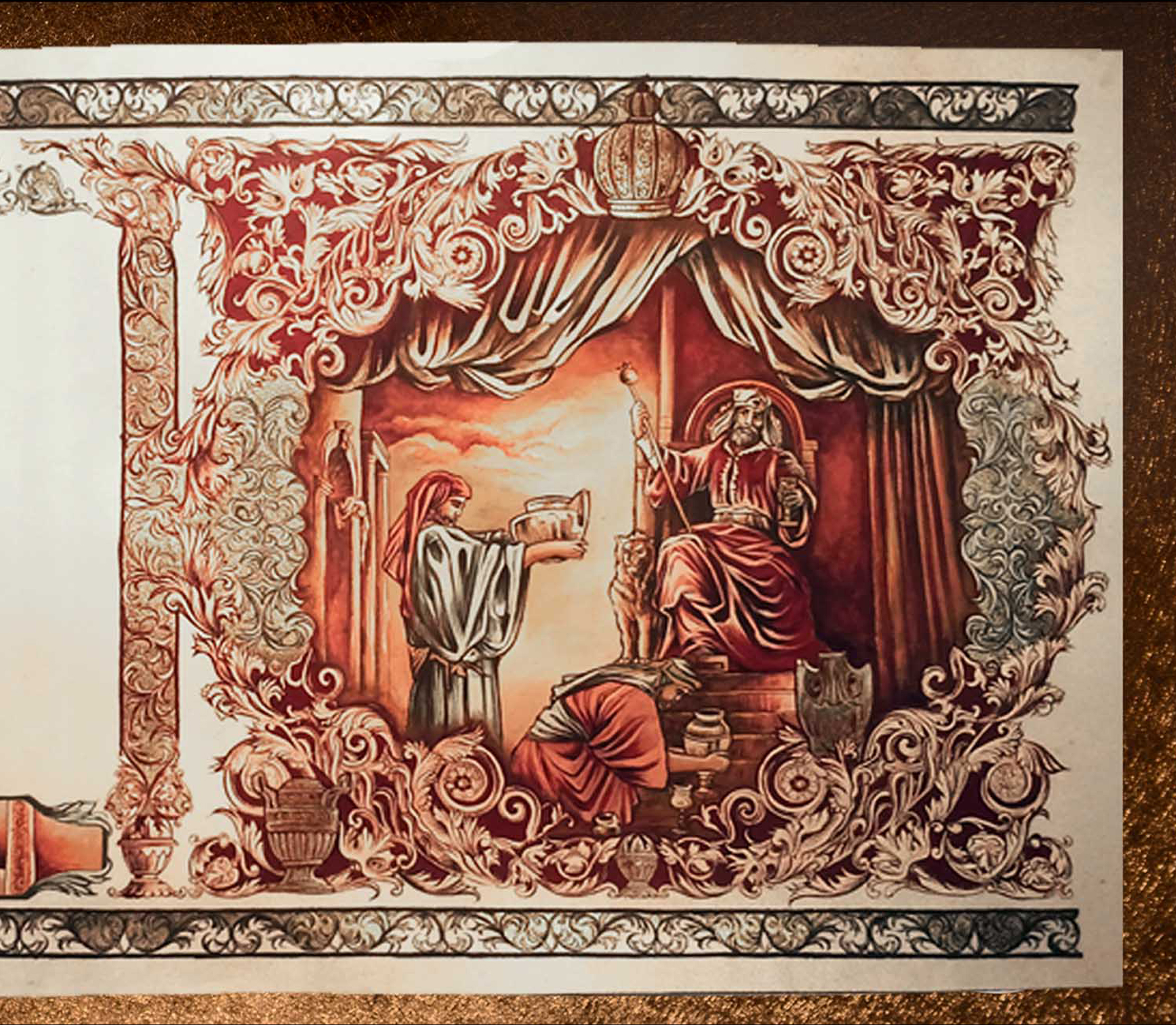 Opening to a 20 cm Miniature Scroll
Opening to a 20 cm Miniature ScrollAfter three years of working at the studio, Shuli married her husband Asaf - a ba’al teshuva and talented musician who is now a kollel student. With his full encouragement, she took the opportunity to make a turn and go independent.
She received her first order a month after the birth of her first son. "The one who ordered it was an acquaintance who attended the wedding and saw the ketubah I illustrated myself for my wedding. He set before me the very challenging task of illustrating a large Esther scroll standing 60 cm tall. The creation spread across eight pages, is about 5 meters long, and the dense and precise drawing required me not less than three years of work. This is essentially the creation with a capital 'C', my first. The work is characterized by its blue-red-gold colors, creating a mysterious and ancient atmosphere together."
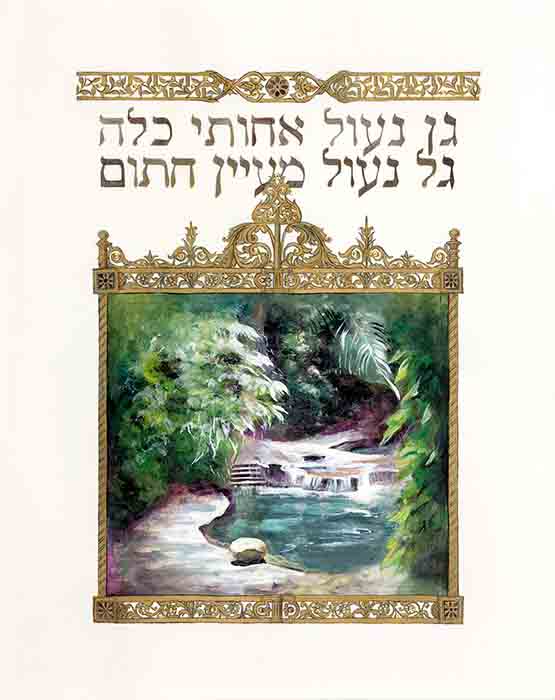
Three years??? Is that the time required for each creation?
"Not always. Generally, the time range is from a few months to several years - depending on the size and complexity of the creation. The first creation that took three years was my longest, and when I finished the creation process, I found it difficult to 'part' from it. The decision was tough and I didn't know how to act. I felt it was a bit ambivalent to create from a connection and simultaneously detach from it.
"However, Hashem sent a personal test that taught me to see things differently: at that time, we went through a medical event with a close family member, and the concern for his life was worrying. I thought about life and their meaning, and things gained different proportions. Having that fear of losing a close person dwarfed the 'partings' from creations... It was a strong understanding that life is above all, even above creation."
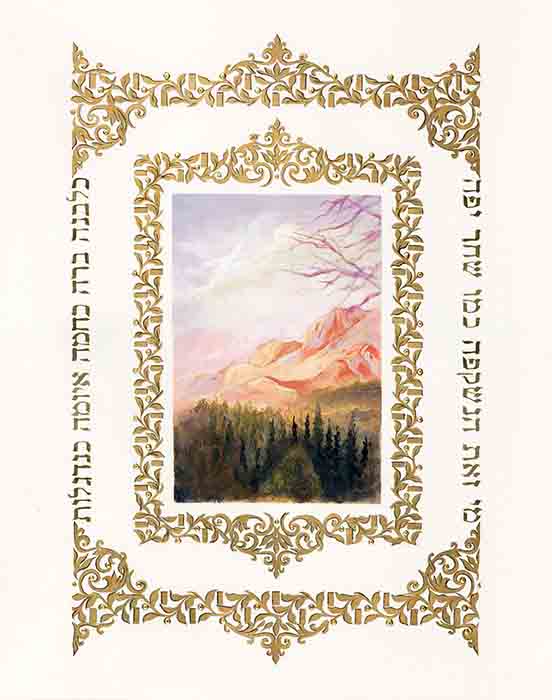
Drawing Inspiration
When looking at Shuli’s creations, it's impossible not to be amazed. They are full of color, depth, and a lot of gold colors that give them a luxurious appearance. Sometimes she uses pure gold leaves and sometimes gold powder. The more you examine the creations, the more you notice additional details that prove how much thought is hidden behind every decoration and drawing.
Where do you derive inspiration for your creations?
"Initially, my inspiration came from Renaissance period paintings, but I think today the inspiration comes more from my internal world," she responds. "This sets me new goals and a vision of connecting the external aspect with the essence and truth of life. This is my long-term goal, and who knows if it won't lead to a significant innovation in the field of Judaica..."
And do people appreciate the enormous effort? Do they understand the hidden meaning?
"Thank Hashem, I receive warm reactions to the creations all the time even from people not connected to the art world and also from traders and 'connoisseurs'," explains Shuli. "It's true that not everyone understands the depth and hidden intentions in every creation, but even those who look in a superficial glance are usually drawn in and find their connection."
There's also one reaction that Shuli received which became the name of one of the creations: "One day, my husband approached one of the major Judaica traders, who really loves my works, with an Esther scroll I illustrated. He sat in his office chair, opened the scroll, and a big smile spread across his face. He started laughing: 'It's amazing, it's amazing...' Since then, we call that scroll 'The Amazing Scroll'."
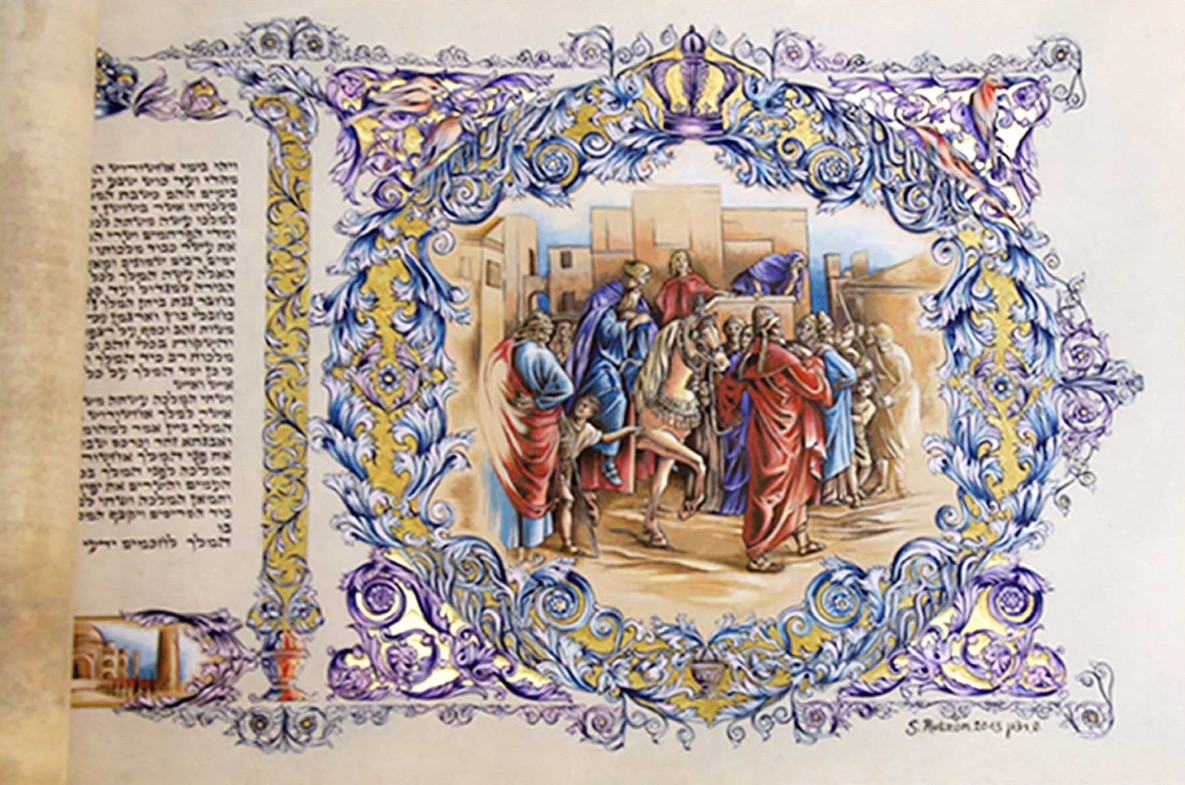 The Amazing Scroll
The Amazing ScrollCan I ask what you are working on these days? Are there any more creations in the pipeline?
"I am in the finishing stages of a job that lasted about a year, on the book 'Pirkei Avot', on parchment. The work was done by order. It is one of three items ordered - an Esther scroll, the Book of 'Shir Hashirim', and the Book of 'Pirkei Avot'. They essentially include a combination of rich Renaissance ornaments, with paintings having straight borders and a clean, modern, and updated look.
"In the 'Pirkei Avot' work, I used a combination of different techniques and even in paper cuts. There's a use of broader brush strokes."
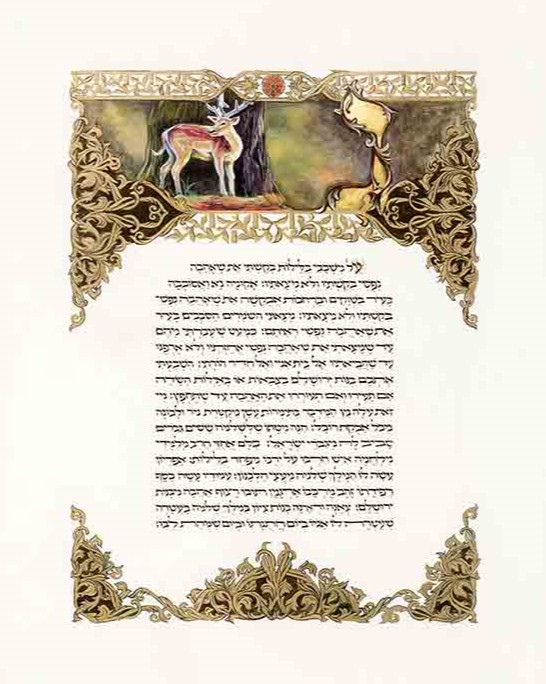
And how do you combine this special work with raising children?
"I’m privileged," she says with satisfaction, "to have six wonderful children and the fact that creation is a daily experience for me. I am so immersed in creation that I lose track of time, and because it is so engrossing, it was important to separate it from home.
"Today, I have fixed working hours every day in the studio located a few blocks from my home. The studio provides space for the mind and a lot of quiet. I don't even listen to music because I need 100% quiet to concentrate. This way, I create a full separation."
Doesn’t that hurt the spontaneity of the creation? Maybe during working hours, you won’t have inspiration?
"No, it doesn't hurt, because creativity is bubbling all the time, and expresses itself during studio work. However, it is clear that the imagination never stops working and many times in the middle of everyday routine, while cooking, or busy with the children, a creative idea related to the work I'm on or a future creation suddenly shines through. So, there's no choice, I drop everything and scribble it on a temporary draft."

